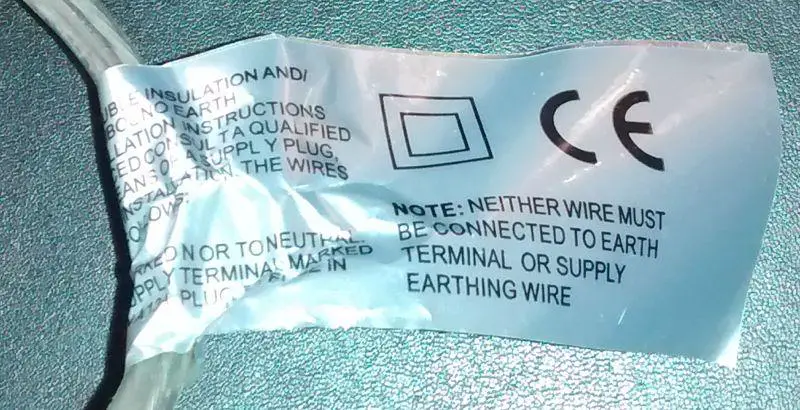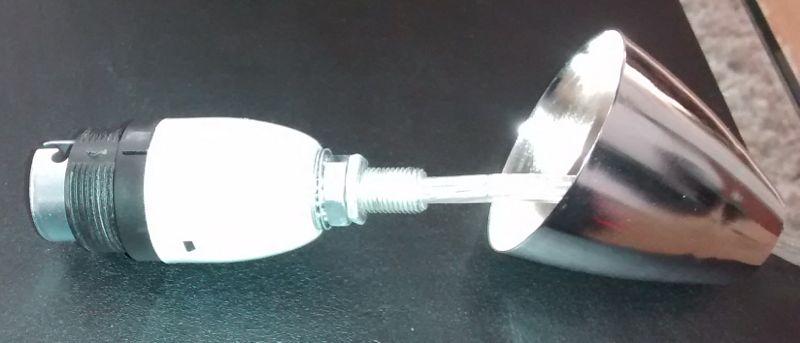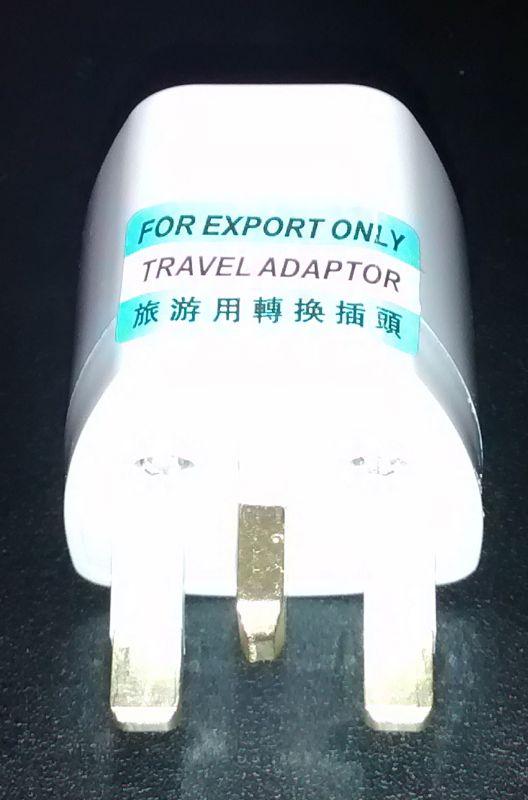Got a call from my mate a couple of weeks ago, he's got some new roses he wants put up. In a couple of rooms, the roses have been dangling on the cable for a while since the ceiling was skimmed - waiting on new fittings.
Fair enough - simple job, looped at switch, just 3 wires to connect.
So here's the fitting he handed me - I guess the "flex" will straighten in time
So what's the first thing I notice - yup, no earthing for the metalwork. That's because it's, according to the labels, double insulated. Yeah right.
Me thinks, and says, something to the effect that someone's 'avvin a larf.
That metal can isn't DI, the lampholder itself might just about be (that's a metal cap over the lampholder, mounted on a metal bush)
Then I find that it did come with destructions which explain it all
In case you can't read it, it says : Always cover the terminal block with at least two layers of insulating tape to isolate it from the fitting
So that's all right then
Also in the pack were two small bits of sleeving (braided, feels a bit like glass fibre) - although not mentioned in the instructions :
So I did my best, I used a small piece of wire, looped under one of the mounting screws, to earth (as best I could) the metalwork, wrapped the block with tape, and put the sleeves on the L&N of the T&E which is what I assume they are provided for.
The more eagle eyed may have noticed the description of a lighting circuit near the top of the destructions
BTW - while these were (I think) 'eBay specials', they were in fact from a UK electrical supplier, with a UK address.
Then onto job no 2 - just drop a coax down from the attic and connect the new Freeview receiver to his new monitor. No problem apart from him having misplaced the splitter that I know he did buy. Connected everything up, but what's this : 2 pin PSU with an adapter :
Yup, you guessed it, 'eBay special', unfused adapter. For good measure, the Freeview box has Russian firmware and doesn't decode the EPG for the HD channels. What's more, watching something on BBC2 HD, and got subtitled for ITV HD - that was "quite confusing" to say the least until I recognised some dialogue from the program.
Still, it was cheap - what more could anyone want ?
Fair enough - simple job, looped at switch, just 3 wires to connect.
So here's the fitting he handed me - I guess the "flex" will straighten in time
So what's the first thing I notice - yup, no earthing for the metalwork. That's because it's, according to the labels, double insulated. Yeah right.
Me thinks, and says, something to the effect that someone's 'avvin a larf.
That metal can isn't DI, the lampholder itself might just about be (that's a metal cap over the lampholder, mounted on a metal bush)
Then I find that it did come with destructions which explain it all
In case you can't read it, it says : Always cover the terminal block with at least two layers of insulating tape to isolate it from the fitting
So that's all right then
Also in the pack were two small bits of sleeving (braided, feels a bit like glass fibre) - although not mentioned in the instructions :
So I did my best, I used a small piece of wire, looped under one of the mounting screws, to earth (as best I could) the metalwork, wrapped the block with tape, and put the sleeves on the L&N of the T&E which is what I assume they are provided for.
The more eagle eyed may have noticed the description of a lighting circuit near the top of the destructions
BTW - while these were (I think) 'eBay specials', they were in fact from a UK electrical supplier, with a UK address.
Then onto job no 2 - just drop a coax down from the attic and connect the new Freeview receiver to his new monitor. No problem apart from him having misplaced the splitter that I know he did buy. Connected everything up, but what's this : 2 pin PSU with an adapter :
Yup, you guessed it, 'eBay special', unfused adapter. For good measure, the Freeview box has Russian firmware and doesn't decode the EPG for the HD channels. What's more, watching something on BBC2 HD, and got subtitled for ITV HD - that was "quite confusing" to say the least until I recognised some dialogue from the program.
Still, it was cheap - what more could anyone want ?










